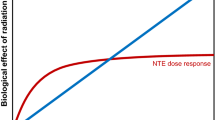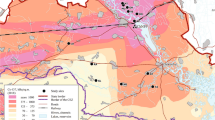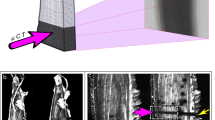Abstract
REDUCTION in radiation damage under conditions of low oxygen tension during the exposure has been demonstrated in a number of plant and animal tissues1. This report deals with similar effects in the insect Rhodnius prolixus. Latent radiation damage in ‘resting’ cells of the epidermis of Rhodnius is expressed as a burn at delayed moulting following a blood meal2. In these studies, the delay in moulting and the size of the burns have been utilized as convenient indices of the oxygen effect during X-irradiation.
This is a preview of subscription content, access via your institution
Access options
Subscribe to this journal
Receive 51 print issues and online access
$199.00 per year
only $3.90 per issue
Buy this article
- Purchase on SpringerLink
- Instant access to full article PDF
Prices may be subject to local taxes which are calculated during checkout
Similar content being viewed by others
References
Patt, H. M., and Brues, A. M., “Radiation Biology”, edit. by Hollaender, 1 (2), 940 (McGraw-Hill, 1954).
Baldwin, W. F., and Salthouse, T. N., Rad. Res. (in the press).
Evans, J., Neary, G. J., and Tonkinson, S. M., Nature, 181, 1083 (1958).
Author information
Authors and Affiliations
Rights and permissions
About this article
Cite this article
BALDWIN, W., SALTHOUSE, T. Oxygen Deficiency and Radiation Damage in the Insect Rhodnius . Nature 183, 974 (1959). https://doi.org/10.1038/183974a0
Issue date:
DOI: https://doi.org/10.1038/183974a0
This article is cited by
-
10.1007/BF00428302
CrossRef Listing of Deleted DOIs (2011)



